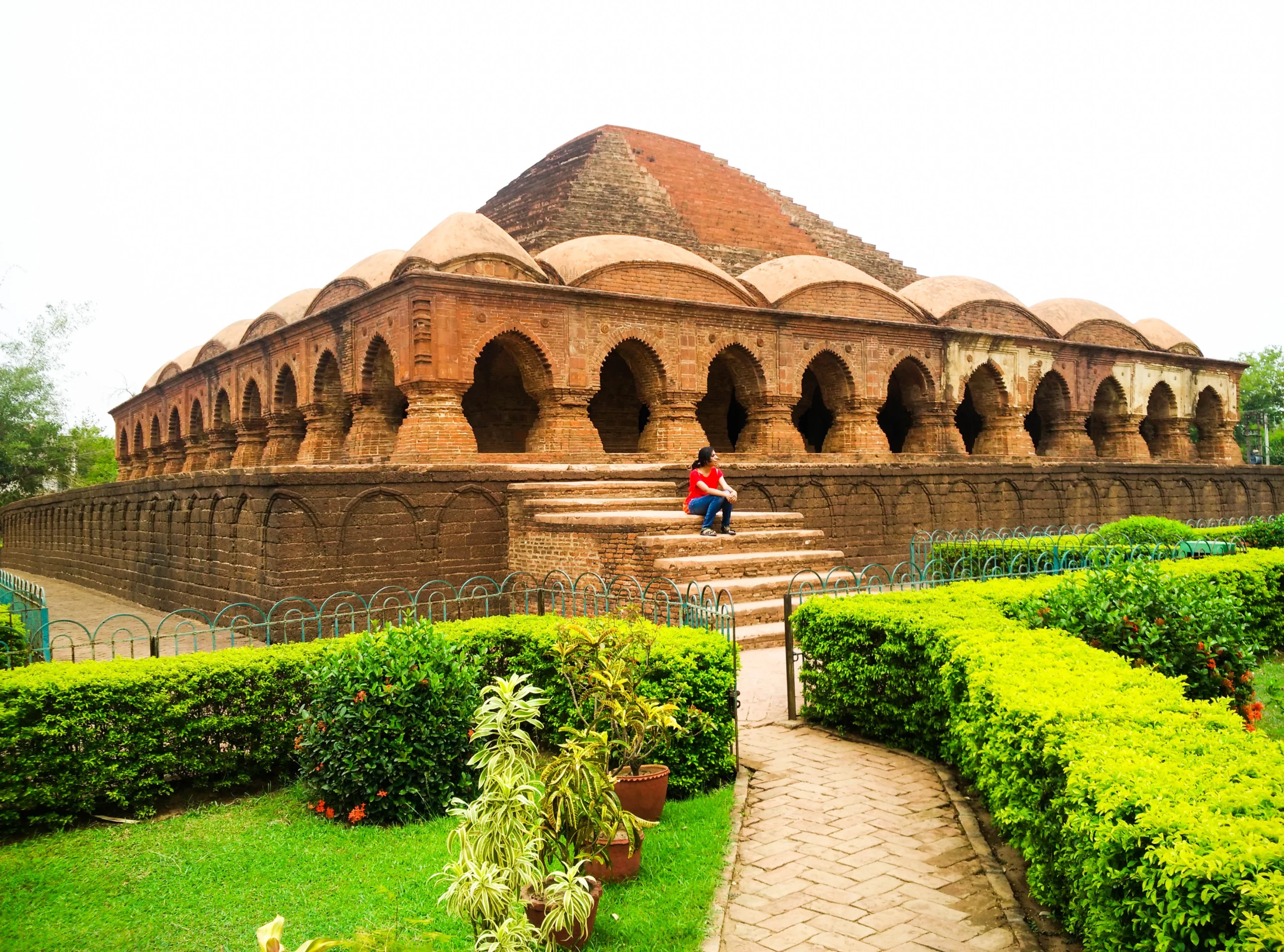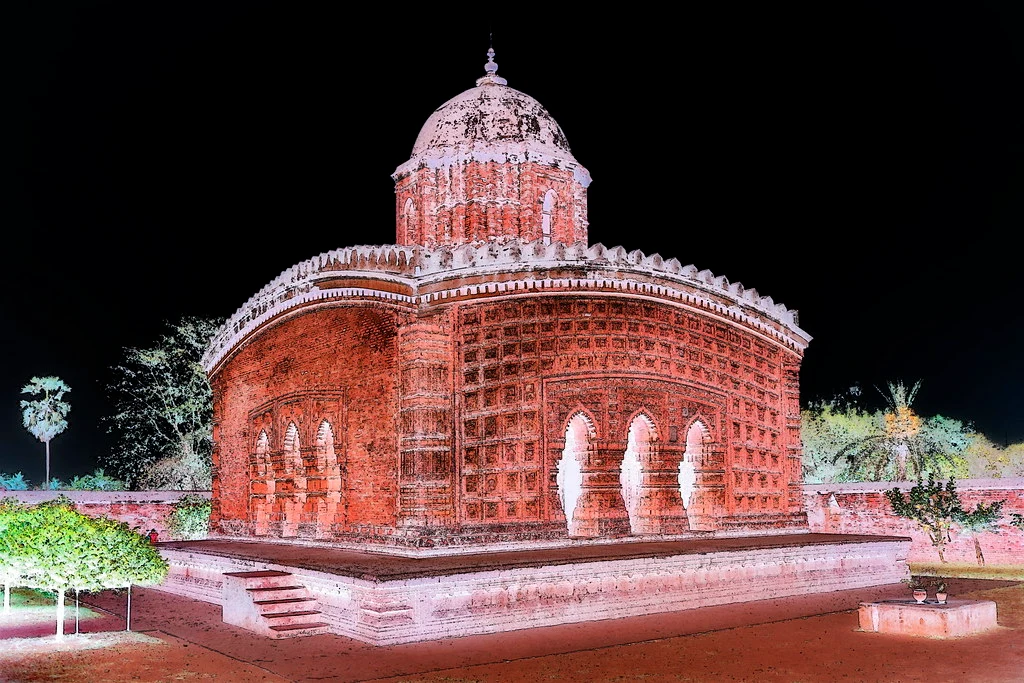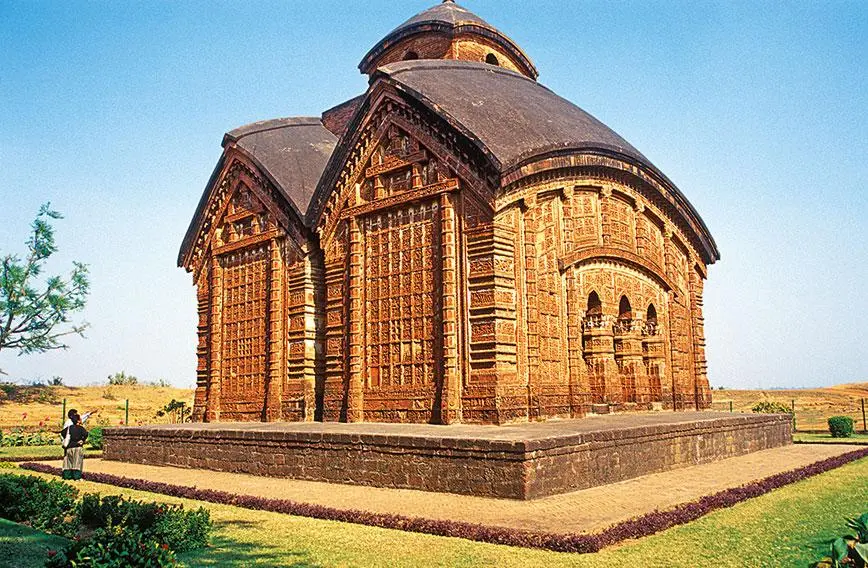Welcome to Bishnupur Temples, a town in the Bankura district of West Bengal, India, renowned for its magnificent temples and rich history. Nestled amidst lush greenery, Bishnupur is a treasure trove of exquisite terracotta temples, showcasing the exquisite craftsmanship of the Malla rulers who once reigned over this region. With a perfect blend of Hindu, Islamic, and vernacular architectural styles, the temples of Bishnupur are a visual delight for art and history enthusiasts.
These temples, dating back to the 17th and 18th centuries, stand as a testament to the architectural brilliance of the bygone era. From the elaborate terracotta carvings depicting mythological tales to the intricately designed facades, each temple tells a unique story. Experience the awe-inspiring Rasmancha, a pyramidal structure adorned with ornate terracotta sculptures, which was once used to house the deities during the Ras festival. Marvel at the linetogel Jorbangla Temple, characterized by its curved roofs and breathtaking terracotta panels depicting stories from the Ramayana and Mahabharata.
Don’t miss the Shyamrai Temple, famous for its intricate carvings and vibrant frescoes. Are you ready to be transported to a bygone era and immerse yourself in the enchanting world of Bishnupur’s temples? Let’s explore the architectural wonders that continue to captivate visitors from around the world.

History and significance of Bishnupur temples
Bishnupur, a striking town in the Bankura district of West Bengal, India, has a rich historical and cultural significance that dates back to the early 17th century. This place, once the capital of the Malla Kingdom, is renowned for its collection of majestic temples built during the reign of the Malla kings. These temples not only reflect the region’s deep religious inclination but also stand as a testament to the architectural prowess of the artists and craftsmen of that era.
The Bishnupur temples are steeped in history and religious symbolism. The town’s name, Bishnupur, which translates to ‘the land of Lord Vishnu,’ is reflective of the deep-rooted Vaishnavite belief system of the Malla rulers. This religious influence is evident in the design and motifs of the temples, which frequently depict scenes from the life of Lord Krishna, an avatar of Vishnu.
These temples are not merely places of worship but serve as a tangible record of the socio-cultural and religious history of the region. They house a wealth of information about the lifestyle, traditions, and beliefs of the people of the Malla period. Each temple, with its unique architectural style and intricate carvings, represents a chapter in the rich tapestry of Bishnupur’s historical narrative.
Architectural styles of Bishnupur temples
The architectural styles of Bishnupur temples showcase an excellent fusion of Hindu, Islamic, and vernacular architecture. The influence of these different styles is evident in the design and layout of the temples. The dominant architectural style is ‘Bengal Ek-Ratna’ and ‘Bengal Pancharatna,’ characterized by a square flat-roofed building with carved cornices, surmounted by a single tower (Ek-Ratna) or five towers (Pancharatna).
The Islamic influence is visible in the arched entrance portals, domed structures, and the use of terracotta as a primary material for construction and decoration. The terracotta work, a distinctive feature of Bishnupur temples, exhibits the high level of craftsmanship and artistic vision of the artisans of that time. The temples are adorned with intricate terracotta panels depicting mythological scenes, flora, fauna, and scenes of day-to-day life.
The ‘Dalan’ style of architecture, featuring a closed chamber with a veranda in front, is another common feature of these temples. The veranda often features a ‘do-chala’ or ‘char-chala’ roof – a Bengali architectural style resembling the gabled roofs of rural huts. This amalgamation of different architectural styles gives the Bishnupur temples a unique and distinctive appeal.
Famous temples in Bishnupur – Rasmancha, Jor Bangla Temple, Madan Mohan Temple
Among the myriad of temples in Bishnupur, some stand out for their architectural grandeur and historical significance. The Rasmancha, built by King Bir Hambir in 1600 AD, is the oldest brick temple in Bishnupur. The structure, which resembles a pyramid, is unique with its elongated tower surrounded by a gallery of smaller towers.
The Jor Bangla Temple, another architectural marvel, is known for its ‘ek-bangla’ style, which resembles two thatched huts joined together. The temple’s exterior walls are adorned with exquisite terracotta panels depicting scenes from the Ramayana and Mahabharata. This temple, built by Raghunath Singh in 1655 AD, is a testament to the artistic and architectural prowess of the Malla period.
The Madan Mohan Temple, built in the late 17th century by King Durjana Singh Deva, is another prominent temple. Dedicated to Lord Krishna (Madan Mohan), the temple holds a significant place in the religious sentiments of the locals. The temple stands on a low square plinth and is encompassed by beautifully decorated walls featuring intricate terracotta carvings.

Unique features of Bishnupur temples – terracotta art, intricate carvings, temple complexes
The unique features of Bishnupur temples lie in their distinctive architectural styles, intricate terracotta carvings, and expansive temple complexes. The terracotta art, a distinctive characteristic of these temples, reflects the high level of craftsmanship of the artisans of the Malla period. The temples are adorned with detailed terracotta panels depicting scenes from Indian epics, mythology, and everyday life.
The intricate carvings and relief work on the temple walls are awe-inspiring. These carvings, done with remarkable precision and creativity, bring the terracotta panels to life. The detailed depictions of flora and fauna, scenes from the battlefield, royal processions, and social life provide a glimpse into the socio-cultural milieu of the Malla period.
The expansive temple complexes, housing several shrines, ponds, and ancillary structures, are another unique feature. These complexes, often enclosed by high walls, provide a serene and spiritual ambiance, ideal for meditation and introspection.
Preservation and restoration efforts of Bishnupur temples
The magnificent temples of Bishnupur, despite their historical and cultural significance, have faced the ravages of time. Many of these structures have deteriorated due to natural weathering and lack of maintenance. Recognizing the need for preservation, various governmental and non-governmental organizations have undertaken restoration efforts.
The Archaeological Survey of India (ASI), in particular, has played a significant role in preserving these architectural marvels. They have undertaken extensive conservation and restoration work, including structural stabilization, chemical treatment, and aesthetic restoration. These efforts have helped preserve the original architectural essence while ensuring the temples’ longevity.
Local community involvement has also been instrumental in the preservation efforts. The community’s sense of pride and ownership in their cultural heritage has motivated them to participate actively in conservation efforts. These collective efforts have ensured that these architectural treasures continue to enchant visitors for generations to come.
Best time to visit Bishnupur and its temples
Bishnupur, with its temperate climate, is a year-round destination. However, the best time to visit these architectural marvels is during the winter months (October to March), when the weather is pleasant, making it ideal for sightseeing and exploration. The Bishnupur Mela, held in December, is another great time to visit, as the town buzzes with cultural activities and festivities.
During this time, the temples of Bishnupur are decked up in lights, and the entire town resonates with the melodies of Bishnupur Gharana music, a traditional form of Indian classical music. The festival also features a fair showcasing local handicrafts, terracotta products, and Baluchari sarees, providing an opportunity to experience the rich cultural heritage of Bishnupur.
However, if you wish to avoid the crowd and have a more peaceful exploration of the temples, the monsoon months (June to September) can be considered. The beauty of the lush green surroundings enhanced by the monsoon rains adds a mystical charm to these historical structures.
Tips for exploring Bishnupur temples – dress code, photography, local customs
When exploring the temples of Bishnupur, it’s essential to respect the local customs and traditions. There is no strict dress code, but modest attire is recommended, keeping in mind the religious significance of these places. Photography is generally allowed, but in certain areas, it may be restricted. Therefore, it’s advisable to check with the local authorities or guides.
It’s also essential to maintain decorum and silence within the temple premises, as these are places of worship for the locals. Be mindful not to touch or damage the intricate terracotta carvings as they are delicate and of significant historical value. Hiring a local guide can enhance your temple exploration experience, as they can provide valuable insights into the history and significance of these structures.
Lastly, remember to carry water and wear comfortable shoes, as exploring the temple complexes may involve a considerable amount of walking. Ensure to take necessary precautions to beat the heat, especially during the summer months.

Nearby attractions and activities in Bishnupur – Bishnupur Museum, Dalmadal Cannon, Mukutmonipur Dam
While the temples are the primary attractions in Bishnupur, there are several other places worth exploring. The Bishnupur Museum, also known as Acharya Jogesh Chandra Purakriti Bhawan, houses a vast collection of artifacts, paintings, and terracotta sculptures, providing deeper insights into Bishnupur’s rich cultural heritage.
The Dalmadal Cannon, located near the Madan Mohan Temple, is another significant attraction. This historical cannon, believed to have been used during the Malla reign to fend off the Maratha invasions, is a reminder of Bishnupur’s tumultuous past.
A short drive from Bishnupur takes you to the serene Mukutmonipur Dam, located at the confluence of the Kangsabati and Kumari rivers. This place is a perfect getaway for nature lovers, offering picturesque views of the sprawling water body against the backdrop of lush green hills.
Final thoughts
Bishnupur, with its rich collection of magnificent temples, offers a fascinating journey into the past. The architectural grandeur, intricate terracotta art, and vibrant cultural heritage make Bishnupur a must-visit destination for history buffs, art enthusiasts, and spiritual seekers.
The preservation and restoration efforts have ensured that these architectural wonders continue to stand tall, narrating the tales of the bygone era. So, whether you are exploring the grand Rasmancha, marveling at the intricate carvings of the Jor Bangla Temple, or immersing yourself in the spiritual ambiance of the Madan Mohan Temple, Bishnupur promises an enchanting and memorable experience.
If this journey through the rich tapestry of Bishnupur’s heritage has captivated your imagination, we invite you to delve further into the realms of enlightenment with our article on Better Thinker. Discover more insights, broaden your perspectives, and embark on yet another enriching expedition through the corridors of knowledge.



